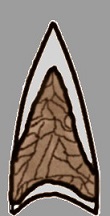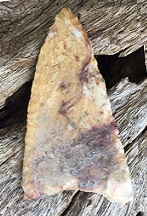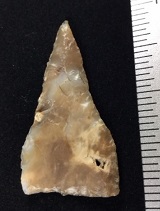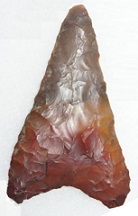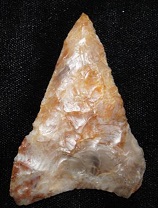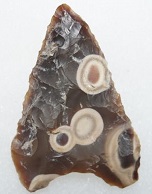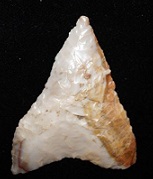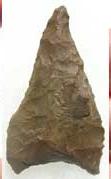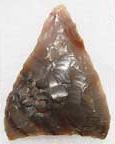Outline is Representative of Size and Shape:

Name Details:
Identified By: Douglas Osborne, Robert H. Crabtree, Alan Bryan
Named For:
Date Identified: 1952
Type Site: The Sheep Island site, Chief Joseph Reservoir, Washington
Identified By: Douglas Osborne, Robert H. Crabtree, Alan Bryan
Named For:
Date Identified: 1952
Type Site: The Sheep Island site, Chief Joseph Reservoir, Washington
Point Validity:
Valid type
Osbourne is an anthropologist and Professor at the University of Washington. Crabtree was served in many professional roles including Director of Archeology and Archaeological, Incorporated in California and Archaeologist for the BLM in Battle Mountain, Nevada. Bryan is an anthropologist and professor at the University of Alberta. This type was named in a professional publication and has many professional references. This is considered a valid type.
Osbourne is an anthropologist and Professor at the University of Washington. Crabtree was served in many professional roles including Director of Archeology and Archaeological, Incorporated in California and Archaeologist for the BLM in Battle Mountain, Nevada. Bryan is an anthropologist and professor at the University of Alberta. This type was named in a professional publication and has many professional references. This is considered a valid type.
Columbia Mule Ear Triangle
AKA: Mule EarCluster:
Description of Physical Characteristics and Flaking Pattern:
This is a small to medium triangular to pentagonal blade with an elliptical cross section. The blade is asymmetrical and commonly recurvate to incurvate. The base ranges from slightly concave to deeply concave. This point has a random flaking pattern.
Size Measurements:
Total Length - 34 to 55 mm (average 36 to 41 mm), Max Blade Width - 19 to 41 mm (average 23 to 28 mm), Basal Concavity - 3 to 7 mm
Total Length - 34 to 55 mm (average 36 to 41 mm), Max Blade Width - 19 to 41 mm (average 23 to 28 mm), Basal Concavity - 3 to 7 mm
Commonly Utilized Material:
Additional Comments:
This point was named Mule Ear after the appearance that this knife takes on after multiple re-sharpening (Heath, 2003).
This point was named Mule Ear after the appearance that this knife takes on after multiple re-sharpening (Heath, 2003).
Distribution: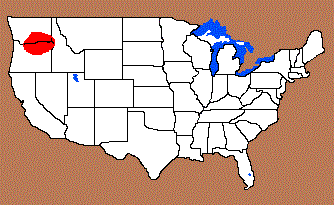
Distribution Comments:
This point is primarily found in the lower regions of the Columbia Plateau, but may be found with decreased frequency into the mid to upper regions of the Columbia Plateau.
This point is primarily found in the lower regions of the Columbia Plateau, but may be found with decreased frequency into the mid to upper regions of the Columbia Plateau.
Age / Periods:
Date: 700 - 400 B.P.
Cultural Period: Classic
Glacial Period: Medieval Warm to Little Ice Age
Culture: Umitilla Culture
Date: 700 - 400 B.P.
Cultural Period: Classic
Glacial Period: Medieval Warm to Little Ice Age
Culture: Umitilla Culture
Age Details:
Other points in this cluster / Related / Associated Points:


